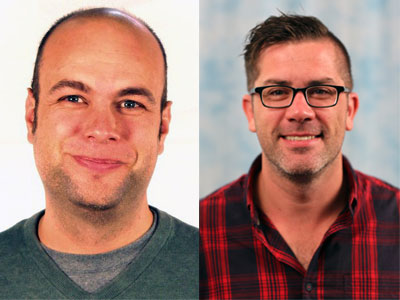
3:30 pm to 4:30 pm
1305 Newell Simon Hall
Abstract: Subterranean robot exploration is difficult with many mobility, communications, and navigation challenges that require an approach with a diverse set of systems, and reliable autonomy. While prior work has demonstrated partial successes in addressing the problem, here we convey a comprehensive approach to address the problem of subterranean exploration in a wide range of tunnel, urban, and cave environments. Our approach is driven by the themes of resiliency and modularity, and we show examples of how these themes influence the design of the different modules. In particular, we detail our approach to artifact detection, pose estimation, coordination, planning, control, and autonomy, and discuss our performance in the Final DARPA Subterranean Challenge.SS
Brief Bios:
Sebastian Scherer is an Associate Research Professor at the Robotics Institute (RI) at Carnegie Mellon University (CMU). His research focuses on enabling autonomy for unmanned rotorcraft to operate at low altitude in cluttered environments. He and His team have shown the fastest and most tested obstacle avoidance on an Yamaha RMax (2006), the first obstacle avoidance for micro aerial vehicles in natural environments (2008), and the first (2010) and fastest (2014) automatic landing zone detection and landing on a full-size helicopter. Dr. Scherer received his B.S. in Computer Science, M.S. and Ph.D. in Robotics from CMU in 2004, 2007, and 2010. He is a Siebel scholar and a recipient of multiple paper awards and nominations, including AIAA@Infotech 2010 and FSR 2013. His research has been covered by the national and internal press including IEEE Spectrum, the New Scientist, Wired, der Spiegel, and the WSJ. His work on self-landing helicopters has received the Popular Science Best of What’s New 2010 Award and in Fall 2016 he demonstrated his inspection robots to President Obama.
Matthew Travers’ research focuses on developing the intelligence necessary to enable complex platforms to autonomously interact with and perform meaningful work in complex environments. The task areas on which he is currently focusing include biologically inspired dynamic locomotion and learning, compliant manipulation for agriculture and food preparation, managing uncertainty in human-robot interaction, and field-ready search and rescue robotics. The central ideas that underlie the analytical aspects of Travers’ work are drawn from classical control theory, Bayesian inference, practical optimal control, and modern reinforcement learning.
There will be a Post Seminar Reception immediately following the seminar
